Cosmic-ray particles and γ-rays striking superconducting circuits can generate qubit errors that are spatially correlated across several millimetres, hampering current error-correction approaches.
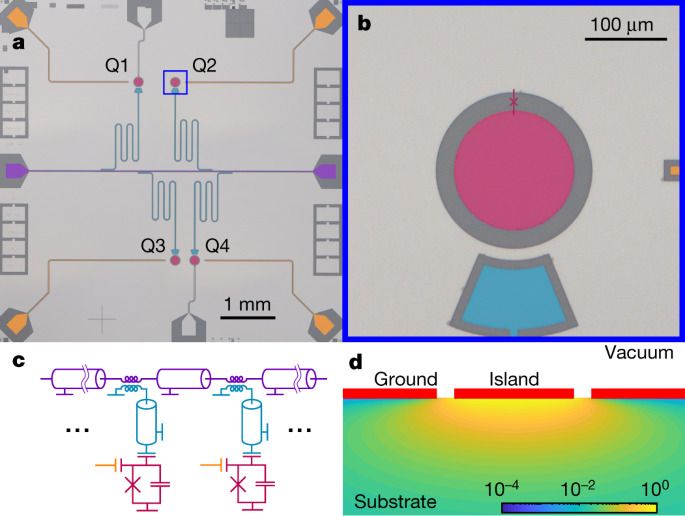

Circa 2020
Researchers at UC Berkeley have developed a rapid test for SARS-CoV-2 that uses an enzyme to cleave viral RNA, initiating a fluorescent signal that can be detected using a smartphone camera, and which can provide a quantitative measurement of the level of viral particles in the sample. The test produce a result in as little as 30 minutes and does not require bulky or expensive laboratory equipment.
Rapid testing is key to measuring and stopping the spread of COVID-19, but current tests, such as PCR, are time consuming and require expensive laboratory equipment, creating a bottleneck in obtaining results. Researchers have been developing alternatives, and this latest technology was rapidly repurposed when the pandemic began. Originally intended to detect HIV in blood samples, the Berkeley researchers have pivoted to allow the device to detect SARS-CoV-2 in nasal swab samples.
The test relies on CRISPR-Cas, originally developed as a gene editing technology. When a pre-programmed Cas13 enzyme is added to the sample, it can cleave RNA sequences from the SARS-CoV-2 virus. This results in other nearby sequences being cleaved also, including a probe that releases fluorescent light when cleaved. The device uses a laser to excite this fluorescence and a smartphone camera can then detect the light, providing a quantitative measurement of the viral particles present in the sample.
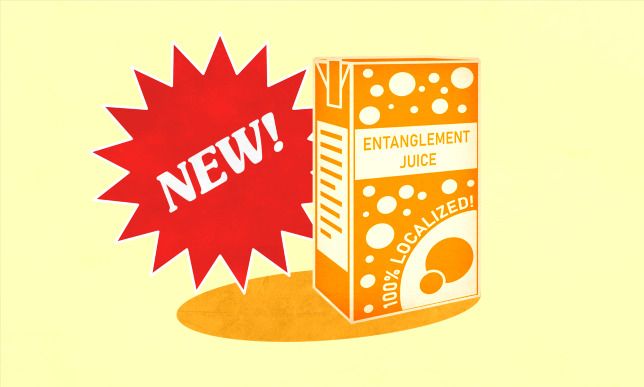
“Conditional witnessing” technique makes many-body entangled states easier to measure.
Quantum error correction – a crucial ingredient in bringing quantum computers into the mainstream – relies on sharing entanglement between many particles at once. Thanks to researchers in the UK, Spain and Germany, measuring those entangled states just got a lot easier. The new measurement procedure, which the researchers term “conditional witnessing”, is more robust to noise than previous techniques and minimizes the number of measurements required, making it a valuable method for testing imperfect real-life quantum systems.
Quantum computers run their algorithms on quantum bits, or qubits. These physical two-level quantum systems play an analogous role to classical bits, except that instead of being restricted to just “0” or “1” states, a single qubit can be in any combination of the two. This extra information capacity, combined with the ability to manipulate quantum entanglement between qubits (thus allowing multiple calculations to be performed simultaneously), is a key advantage of quantum computers.
The problem with qubits
However, qubits are fragile. Virtually any interaction with their environment can cause them to collapse like a house of cards and lose their quantum correlations – a process called decoherence. If this happens before an algorithm finishes running, the result is a mess, not an answer. (You would not get much work done on a laptop that had to restart every second.) In general, the more qubits a quantum computer has, the harder they are to keep quantum; even today’s most advanced quantum processors still have fewer than 100 physical qubits.
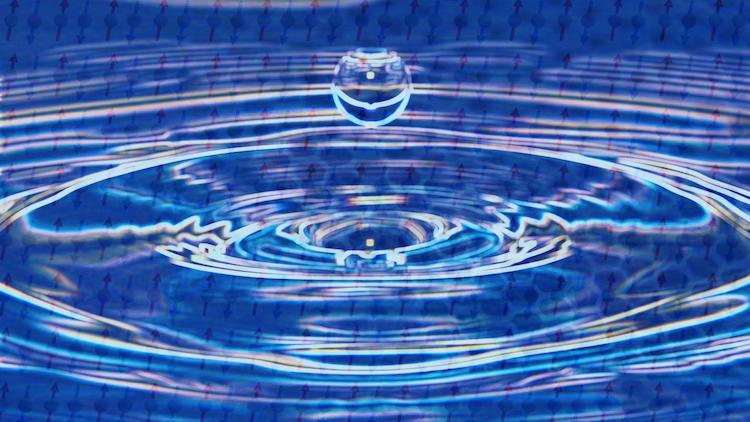
Physics World
Quantum mechanics describes this frustration by suggesting that the orientation of the spins is not rigid. Instead, it constantly changes direction in a fluid-like way to produce an entangled ensemble of spin-ups and spin-downs. Thanks to this behaviour, a spin liquid will remain in a liquid state even at temperatures near absolute zero, where most materials usually freeze solid.
The holon and the spinon
To describe this behaviour in mathematical terms, the late Nobel laureate Philip W Anderson, who predicted the existence of spin liquids in 1973, proposed that in the quantum regime, an electron might in fact be composed of two distinct particles. The first, known as a “holon”, would bear the electron’s negative charge, while the second “spinon” particle would carry its spin. Anderson later suggested that this spin-charge separation might provide a microscopic mechanism to explain the high superconducting transition temperatures (Tc) that were observed in copper oxides, or cuprates, beginning in the late 1980s.

This year, physicists gave us an early view of a third kingdom of quasiparticles that only arise in two dimensions.
The rest of the particles in the universe are bosons, a group that includes particles like photons (the messengers of light and radiation) and gluons (which “glue” quarks together). Unlike fermions, two or more bosons can exist in the same state at the same time.
This article appeared in Discover’s annual state of science issue as Anyons Join the Particle Party.
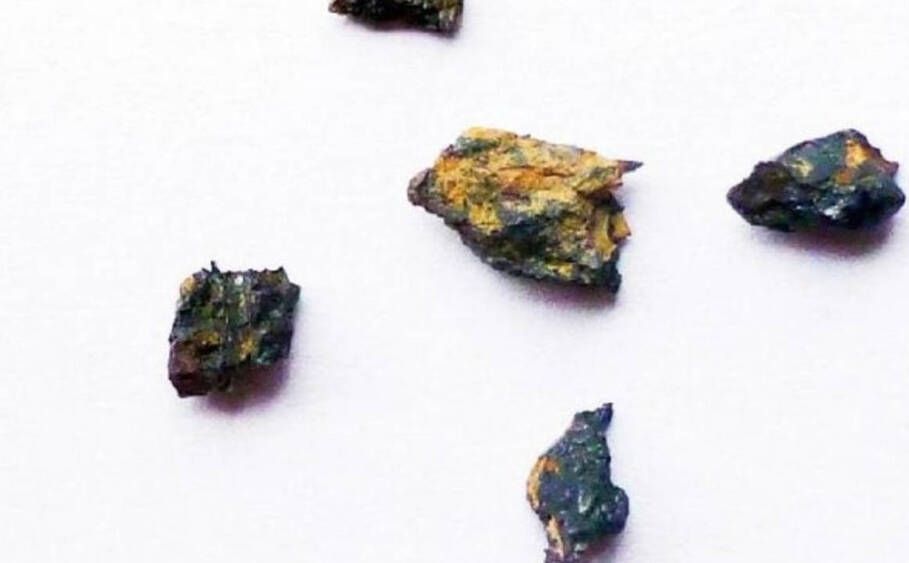
This Stone Predates the Sun.
Recent analysis of a stone found in the Libyan Desert Glass area of southwest Egypt, has sparked debate and a rethink of the current consensus on the formation of the solar system.
In a study, due to be published next month, a team of international researchers announced the resulting analysis of a stone that was subsequently named Hypatia after the ancient female astronomer of Alexandria.
Utilizing techniques from electron scanning microscopy, to proton induce X-ray emission and micro-Raman spectroscopy – the results revealed compounds not found anywhere on our planet, solar system or any known meteorite. As well, a lack of silicates was found which sets it apart from interplanetary dust particles and all known cometary material. Previous analysis of noble gas and nitrogen isotope studies suggest an extraterrestrial origin, which along with these new results strongly suggests a pre-solar origin and could indicate a high degree of heterogeneity in the solar nebula.

When particles are cooled down to temperatures just above absolute zero, they form a BEC – a state of matter in which all the particles occupy the same quantum state and thus act in unison, like a superfluid. A BEC made up of tens of thousands of particles therefore behaves as if it were just one single giant quantum particle.
An international team of researchers led by Carlos Anton-Solanas and Christian Schneider from the University of Oldenburg, Germany; Sven Höfling of the University of Würzburg, Germany; Sefaattin Tongay at Arizona State University, US; and Alexey Kavokin of Westlake University in China, has now generated a BEC from quasiparticles known as exciton-polaritons in atomically thin crystals. These quasiparticles form when excited electrons in solids couple strongly with photons.
“Devices that can control these novel light-matter states hold the promise of a technological leap in comparison with current electronic circuits,” explains Anton-Solanas, who is in the quantum materials group at Oldenburg’s Institute of Physics. “Such optoelectronic circuits, which operate using light instead of electric current, could be better and faster at processing information than today’s processors.”
Using an ultrafast transmission electron microscope, researchers from the Technion – Israel Institute of Technology have, for the first time, recorded the propagation of combined sound and light waves in atomically thin materials.
The experiments were performed in the Robert and Ruth Magid Electron Beam Quantum Dynamics Laboratory headed by Professor Ido Kaminer, of the Andrew and Erna Viterbi Faculty of Electrical & Computer Engineering and the Solid State Institute.
Single-layer materials, alternatively known as 2D materials, are in themselves novel materials, solids consisting of a single layer of atoms. Graphene, the first 2D material discovered, was isolated for the first time in 2004, an achievement that garnered the 2010 Nobel Prize. Now, for the first time, Technion scientists show how pulses of light move inside these materials. Their findings, “Spatiotemporal Imaging of 2D Polariton Wavepacket Dynamics Using Free Electrons,” were published in Science following great interest by many scientists.
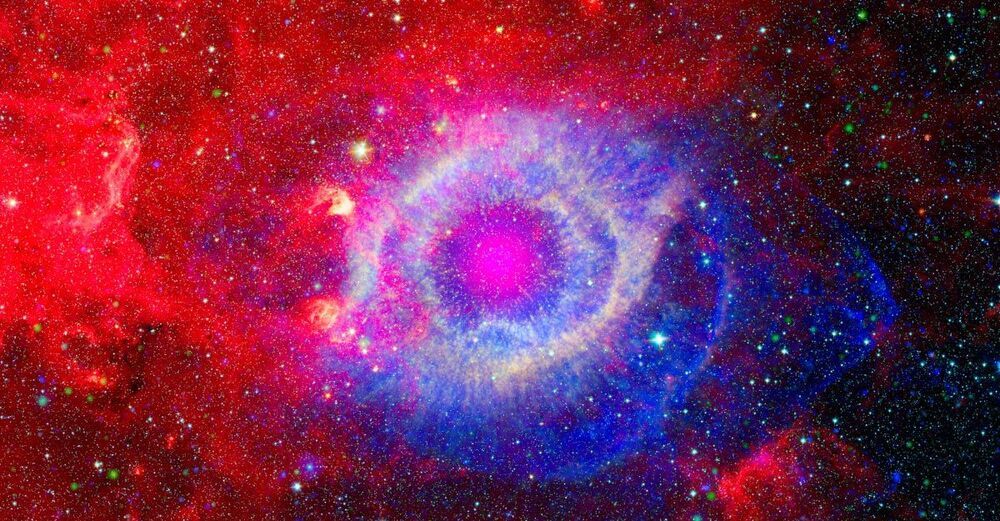
In a decade-long quest, scientists at Berkeley Lab, the University of Hawaii, and Florida International University uncover new clues to the origins of the universe – and land new chemistry for cleaner combustion engines.
For nearly half a century, astrophysicists and organic chemists have been on the hunt for the origins of C6H6, the benzene ring – an elegant, hexagonal molecule comprised of 6 carbon and 6 hydrogen atoms.
Astrophysicists say that the benzene ring could be the fundamental building block of polycyclic aromatic hydrocarbons or PAHs, the most basic materials formed from the explosion of dying, carbon-rich stars. That swirling mass of matter would eventually give shape to the earliest forms of carbon – precursors to molecules some scientists say are connected to the synthesis of the earliest forms of life on Earth.

A secure quantum internet is one step closer thanks to a quantum memory made from a crystal, which could form a crucial part of a device able to transmit entangled photons over a distance of 5 kilometres. Crucially, it is entirely compatible with existing communication networks, making it suitable for real-world use.
There has long been a vision of a quantum version of the internet, which would allow quantum computers to communicate across long distances by exchanging particles of light called photons that have been linked together with quantum entanglement, allowing them to transmit quantum states.
The problem is that photons get lost when they are transmitted through long lengths of fibre-optic cable. For normal photons, this isn’t an issue, because networking equipment can simply measure and retransmit them after a certain distance, which is how normal fibre data connections work. But for entangled photons, any attempt to measure or amplify them changes their state.